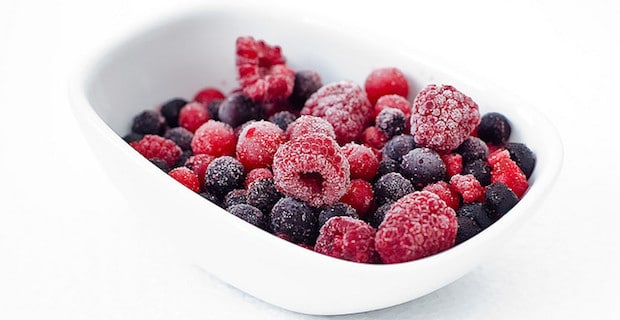
As summer begins to loosen its grip and the children are heading back to school, many of us start anticipating the unique pleasures that autumn delivers. Yet then, year after year, the inevitable happens. Winter. And while there may be plenty of lovely things about winter, an abundance of fresh local fruits and vegetables isn’t generally one of them.
But fear not. It doesn’t have to be months upon months of all kale and winter squash, or expensive imported (and consequently lacking in texture and flavor) fruits and vegetables. If you get busy now, while the local markets are still brimming with the summer harvest, you can have tomatoes and corn and peaches all year round.
Read more about farmers markets
If you are a habitual canner you already know this, of course; but for those of us who may have an unwarranted aversion to mason jars and sterilizing baths, you can put your freezer to work to keep those fruits and vegetables year-round. In terms of texture, some things freeze better than others. Produce with delicate cell walls (like berries) will be compromised when the water content expands and ruptures the structure – the taste is still great, just don’t expect a perfect raspberry to appear once it’s defrosted. Other items freeze beautifully. And in terms of retaining nutrients, don’t worry; the USDA assures us that, “the freezing process itself does not destroy nutrients.”
Tips before you begin
- Use the freshest produce you can find, and freeze it while it is still as fresh as possible.
- Wash and dry everything thoroughly; remove pits and cut into uniform sized pieces.
- Use containers, freezer bags or a vacuum seal system – don’t forget to leave room for expansion.
- If you don’t like using plastic, the very smart people at Ball make freezer safe glass jars.
- Label packages with contents and date. When ready to use, defrost in the refrigerator.
Freezing fruit
There are a couple of ways to freeze fruit: packed in sugar, packed in a simple sugar syrup, or naked. Some experts recommend freezing with sugar as they say it helps to better preserve the flavor and texture of fruit. Once defrosted much of the sugar can be rinsed off, but in the end, it doesn’t taste the same as pure and simple and some of the juices are lost in rinsing. To pack in sugar, just gently stir prepared fruit in sugar, let rest until the fruit begins to release its juices and then pack for freezing. To use the sugar syrup method, heat three cups of sugar with four cups of water over medium-high heat, stirring until the sugar has dissolved. Let cool and pour over prepared fruit to cover, then pack for freezing.
The best method for freezing fruit without sugar is to prepare the fruit and then lay it out on cookie sheets to freeze (if your freezer is too narrow to accommodate cookie sheets, try dinner plates). Once frozen, pack in freezer bags.
Freezing vegetables
Vegetables are a bit more fickle when it comes to freezing; they’re just as easy, but different vegetables respond differently to the freezer – some liked to be cooked, some prefer to be frozen raw. There are excellent websites that outline specific methods for different vegetables. Garden Guides has one of the most comprehensive list of instructions.
Read more about healthy fruits and vegetables
Freezing herbs
Most people generally turn to drying garden herbs, but freezing works really well too. Simply remove leaves from the stem, and then wash and dry them. Place then on a tray in the freezer and allow them to freeze, before gathering them into a labeled freezer package. You can also turn you herbs into an ersatz pesto and freeze it in ice cube trays (leave out the cheese since that can throw the texture off). Once frozen, put them in a freezer package and use them as needed to perk up winter soups and pastas; you’ll be bestowed with a little bit of summer, hopefully enough to get you through until the nest season’s abundance of produce starts rolling in.
Bottom Line
Don' t let the change of weather stop you from enjoying the summer fruits, vegetable or herbs you love.
Read This Next: Eat Leafy Vegetables to Promote Good Digestion
Image: Mike Haufe










